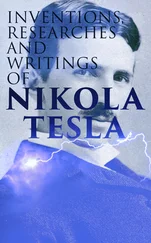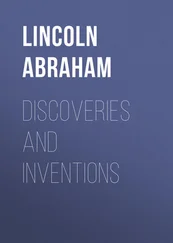Johann Beckmann - A History of Inventions, Discoveries, and Origins, Volume II (of 2)
Здесь есть возможность читать онлайн «Johann Beckmann - A History of Inventions, Discoveries, and Origins, Volume II (of 2)» — ознакомительный отрывок электронной книги совершенно бесплатно, а после прочтения отрывка купить полную версию. В некоторых случаях можно слушать аудио, скачать через торрент в формате fb2 и присутствует краткое содержание. Жанр: foreign_antique, foreign_prose, на английском языке. Описание произведения, (предисловие) а так же отзывы посетителей доступны на портале библиотеки ЛибКат.
- Название:A History of Inventions, Discoveries, and Origins, Volume II (of 2)
- Автор:
- Жанр:
- Год:неизвестен
- ISBN:нет данных
- Рейтинг книги:4 / 5. Голосов: 1
-
Избранное:Добавить в избранное
- Отзывы:
-
Ваша оценка:
- 80
- 1
- 2
- 3
- 4
- 5
A History of Inventions, Discoveries, and Origins, Volume II (of 2): краткое содержание, описание и аннотация
Предлагаем к чтению аннотацию, описание, краткое содержание или предисловие (зависит от того, что написал сам автор книги «A History of Inventions, Discoveries, and Origins, Volume II (of 2)»). Если вы не нашли необходимую информацию о книге — напишите в комментариях, мы постараемся отыскать её.
A History of Inventions, Discoveries, and Origins, Volume II (of 2) — читать онлайн ознакомительный отрывок
Ниже представлен текст книги, разбитый по страницам. Система сохранения места последней прочитанной страницы, позволяет с удобством читать онлайн бесплатно книгу «A History of Inventions, Discoveries, and Origins, Volume II (of 2)», без необходимости каждый раз заново искать на чём Вы остановились. Поставьте закладку, и сможете в любой момент перейти на страницу, на которой закончили чтение.
Интервал:
Закладка:
A History of Inventions, Discoveries, and Origins, Volume II (of 2)
THE STEAM-ENGINE,
AND THE DISCOVERIES OF JAMES WATT
Although the plan of this new edition of Beckmann’s ‘History of Inventions and Discoveries’ was to confine it to the subjects treated of in the original work, yet we feel it imperative to make an exception in favour of the Steam-Engine , the most important of all modern inventions.
The power of steam was not entirely unknown to the ancients, but before the æra rendered memorable by the discoveries of James Watt, the steam-engine, which has since become the object of such universal interest, was a machine of extremely limited power, inferior in importance and usefulness to most other mechanical agents used as prime movers. Hero of Alexandria, who lived about 120 years before the birth of Christ, has left us the description of a machine, in which a continued rotatory motion was imparted to an axis by a blast of steam issuing from lateral orifices in arms placed at right angles to it. About the beginning of the seventeenth century, a French engineer, De Caus, invented a machine by which a column of water might be raised by the pressure of steam confined in the vessel, above the water to be elevated; and in 1629, Branca, an Italian philosopher, contrived a plan of working several mills by a blast of steam against the vanes; from the descriptions, however, which have been left us of these contrivances, it does not appear that their projectors were acquainted with those physical properties of elasticity and condensation on which the power of steam as a mechanical agent depends.
In 1663, the celebrated Marquis of Worcester described in his Century of Inventions, an apparatus for raising water by the expansive force of steam only. From this work we extract the following short account of the first steam-engine. “68. An admirable and most forcible way to drive up water by fire; not by drawing or sucking it upwards, for that must be as the philosopher calleth it, intra sphæram activitatis , which is but at such a distance. But this way hath no bounder, if the vessel be strong enough: for I have taken a piece of whole cannon, whereof the end was burst, and filled it three-quarters full of water, stopping and screwing up the broken end as also the touch-hole; and making a constant fire under it, within twenty-four hours it burst and made a great crack; so that having a way to make my vessels so that they are strengthened by the force within them, and the one to fill after the other, I have seen the water run like a constant stream, forty feet high: one vessel of water rarefied by fire, driveth up forty of cold water; and a man that tends the work is but to turn two cocks, that one vessel of water being consumed, another begins to force and refill with cold water, and so successively; the fire being tended and kept constant, which the self-same person may likewise abundantly perform in the interim, between the necessity of turning the said cocks.”
The next name to be mentioned in connection with the progressive history of the invention of the steam-engine, is that of Denis Papin, a native of France, who, being banished from his country, was established Professor of Mathematics at the University of Marburg, by the Landgrave of Hesse. He first conceived the important idea of obtaining a moving power by means of a piston working in a cylinder (1688), and subsequently (1690) that of producing a vacuum in the cylinder by the sudden condensation of steam by cold. In accordance with these ideas he constructed a model consisting of a small cylinder, in which was inserted a solid piston, and beneath this a small quantity of water; on applying heat to the bottom of the cylinder, steam was generated, the elastic force of which raised the piston; the cylinder was then cooled by removing the fire, when the steam condensed and became again converted into water, thus creating a vacuum in the cylinder, into which the piston was forced by the pressure of the atmosphere; there is, however, no evidence of his having carried that or any other machine into practical use, before machines worked by steam had been constructed elsewhere.
The first actual working steam-engine of which there is any record, was invented by Captain Savery an Englishman, to whom a patent was granted in 1698 for a steam-engine to be applied to the raising of water, &c. This gentleman produced a working-model before the Royal Society, as appears from the following extract from their Transactions: – “June 14th, 1699. Mr. Savery entertained the Royal Society with showing a small model of his engine for raising water by help of fire, which he set to work before them: the experiment succeeded according to expectation, and to their satisfaction.” This engine, which was used for some time to a considerable extent for raising water from mines, consisted of a strong iron vessel shaped like an egg, with a tube or pipe at the bottom, which descended to the place from which the water was to be drawn, and another at the top, which ascended to the place to which it was to be elevated. This oval vessel was filled with steam supplied from a boiler, by which the atmospheric air was first blown out of it. When the air was thus expelled, and nothing but pure steam left in the vessel, the communication with the boiler was cut off, and cold water poured on the external surface. The steam within was thus condensed and a vacuum produced, and the water drawn up from below in the usual way by suction. The oval steam-vessel was thus filled with water; a cock placed at the bottom of the lower pipe was then closed, and steam was introduced from the boiler into the oval vessel above the surface of the water. This steam being of high pressure, forced the water up the ascending tube, from the top of which it was discharged; and the oval vessel being thus refilled with steam, the vacuum was again produced by condensation, and the same process was repeated by using two oval steam-vessels, which would act alternately; one drawing water from below, while the other was forcing it upwards, by which an uninterrupted discharge of water was produced. Owing to the danger of explosion, from the high pressure of the steam which was used, and from the enormous waste of heat by unnecessary condensation, these engines soon fell into disuse.
Several ingenious men now turned their attention to the improvement of the steam-engine, with a view to reduce the consumption of fuel, which was found to be so immense as to preclude its use except under very favourable circumstances; and in 1705, Thomas Newcomen, a blacksmith or ironmonger, and John Cawley, a plumber and glazier, patented their atmospheric engine, in which at first condensation was effected by the affusion of cold water upon the external surface of the cylinder, which was introduced into a hollow casing by which it was surrounded. Having accidentally observed that an engine worked several strokes with unusual rapidity without the supply of condensing water, Newcomen found, on examining the piston, a hole in it through which the water poured on to keep it air-tight issued in the form of a little jet, and instantly condensed the steam under it; this led him to abandon the casing and to introduce a pipe furnished with a cock, into the bottom of the cylinder, by which water was supplied from a reservoir. Newcomen’s engine required the constant attendance of some person to open and shut the regulating and condensing valves, a duty which was usually entrusted to boys, called cock-boys . It is said that one of these boys, named Humphrey Potter, wishing to join his comrades at play, without exposing himself to the consequences of suspending the performance of the engine, contrived by attaching strings of proper length to the levers which governed the two cocks, to connect them with the beam, so that it should open and close the cocks as it moved up and down, with the most perfect regularity. By this simple contrivance the steam-engine for the first time became an automaton.
Читать дальшеИнтервал:
Закладка:
Похожие книги на «A History of Inventions, Discoveries, and Origins, Volume II (of 2)»
Представляем Вашему вниманию похожие книги на «A History of Inventions, Discoveries, and Origins, Volume II (of 2)» списком для выбора. Мы отобрали схожую по названию и смыслу литературу в надежде предоставить читателям больше вариантов отыскать новые, интересные, ещё непрочитанные произведения.
Обсуждение, отзывы о книге «A History of Inventions, Discoveries, and Origins, Volume II (of 2)» и просто собственные мнения читателей. Оставьте ваши комментарии, напишите, что Вы думаете о произведении, его смысле или главных героях. Укажите что конкретно понравилось, а что нет, и почему Вы так считаете.












